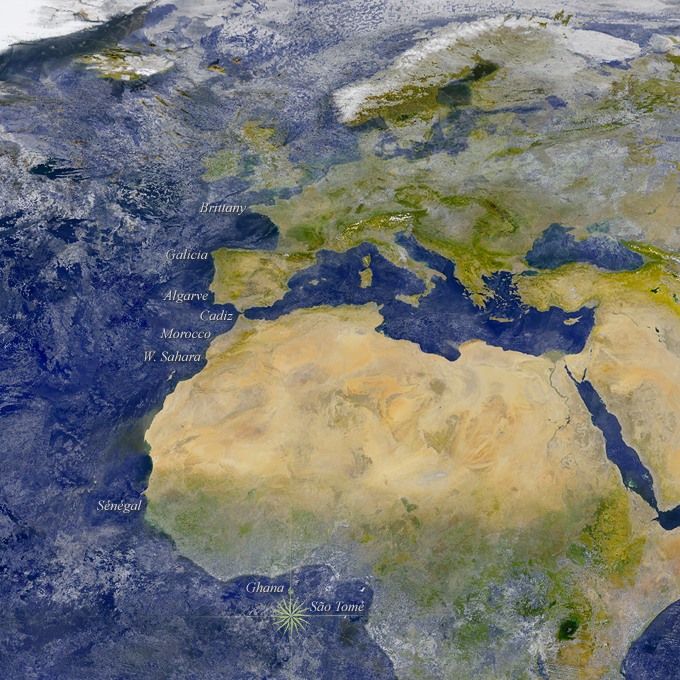
ABSTRACT: for those who are in a hurry...
H. marmorata exists! It was nice to meet you.
Ciao!

Three Haliotidæ were registered in the area:
H. coccinea Reeve 1846,
H. tuberculata Linnæus 1758, and
H. marmorata Linnæus 1758.
H. coccinea is now considered as a subspecies of
tuberculata, with a form named canariensis Nordsieck 1975, of little interest.
 H. tuberculata coccinea
H. tuberculata coccinea Reeve lives in offshore islands, from Azores to Cabo Verde archipelago, via Madeira, the Selvagen and the Canary islands. This species is never found along the mainland shores.
 H. tuberculata
H. tuberculata s.s Lin. lives from Channel islands & Brittany south to, at least, the northern Sénégal, and colonized the whole Mediterranean Sea. Shells from this last area are smaller than atlantic ones, and extremely variable in colour, pattern or sculpture. Folded specimens of this dwarf population are called forma lamellosa Lamarck 1822.
 H. marmorata
H. marmorata Linnæus lives between the NW. Africa and the Biafra Bight. It can be as large as most of the atlantic
tuberculata's. But small adult specimens do occur, often with thinner sculptures than those observed on larger shells; these two characters and their reddish colouration led L.A. Reeve to propose the name rosacea:
Haliotis rosacea Reeve 1846. It is now considered as a variant, like Lamarck's lamellosa in Mediterranean Sea, canariensis Nordsieck in Canarias etc.

The question was stated
to determine if
H. tuberculata and
H. marmorata were or
were not extreme variants of a same species. In order to find a definitive
answer, anatomical studies on the two taxa are, of course, the best manner
to proceed. For the moment, nothing great was undertaken. More: anatomical
studies on
marmorata should consider the material from type-localities
found in the synonymy (
decussata,
guineensis,
rosacea)...
In few words, a difficult task.

Of course, we could just await the miraculous paper and, meanwhile, devote ourselves to carefree activities like gamboling along the shore, pizza-eating contests, kiting, karting, carving or caving etc. but... this blasted question that remained intact, unconquered, unattacked, even not started, was a prey too inviting for an abalone lover like me. I had to test my teeth on it.

So here follows a kind of comparative table, which displays shells of what is called
tuberculata, shells of what is called
marmorata, shells of what is called
rosacea, arranged along the atlantic coast from the north to the south, from Jersey to São Tomé. The aim being to enlighten, if possible, the differences or the transitions that might occur between the two taxa.

